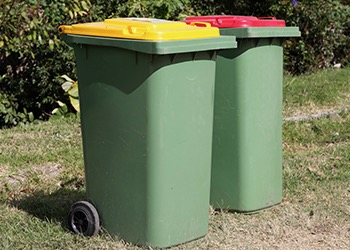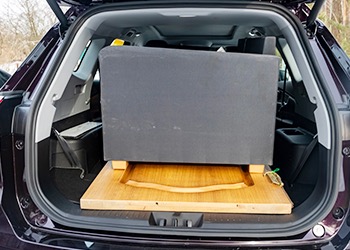
Moving can be a daunting task with a myriad of things to consider – from the emotional aspect of leaving a home to the physical strain of transporting belongings. Amid these challenges, it’s easy to overlook the environmental impact of the move. However, with a rising global emphasis on sustainable living, it’s crucial to integrate eco-friendly practices into all aspects of our lives, including moving. We’ll delve into the concept of “sustainable moving” below and provide some tips on minimising waste, especially during furniture removal.
Understanding Sustainable Moving
At its core, sustainable moving is about reducing the environmental footprint of relocating. This involves using eco-friendly packing materials, minimising waste, and recycling or reusing items that are no longer needed. While the broader idea encompasses everything from transport emissions to the repurposing of goods, this article focuses on how you can minimise waste during furniture removal.
1. Plan Ahead

The key to sustainable moving lies in meticulous planning. Before diving into the packing process, assess your furniture. Make a list of items that are worn out or no longer needed. This proactive approach helps avoid last-minute waste generation and ensures that you only transport what’s essential.
2. Sell Or Donate Unwanted Furniture
Instead of discarding furniture that’s still in good condition, consider selling it online or at a yard sale. Platforms like Craigslist, Facebook Marketplace, or local classifieds make it easy for individuals to sell used items. If selling isn’t feasible, donate your furniture to local charities, shelters, or community centres. This not only minimises waste but also helps those in need.
3. Opt For Reusable Packing Materials
Traditionally, moving involves the use of cardboard boxes, bubble wrap, and tape – all of which contribute to waste. Embrace sustainable moving by seeking out reusable packing materials. Renting plastic moving boxes or using crates are great alternatives. If you must use cardboard boxes, ensure they’re recycled or upcycled after the move.
4. Repair Instead Of Replace
If you have furniture that’s slightly damaged or worn out, consider repairing it instead of disposing of it. In many cases, a simple fix or refurbishment can give a piece of furniture a new lease on life. This not only conserves resources but also saves you money in the long run.
5. Efficient Loading And Transportation

Efficiently loading your furniture ensures minimal damage during transit, which, in turn, reduces the chances of disposal upon reaching your new home. Hire a reputable moving company with experience in sustainable moving or if doing it yourself, pack items tightly and securely to avoid breakage.
6. Recycle Responsibly
Inevitably, there will be items that cannot be sold, donated, or repaired. In such cases, ensure that they’re recycled responsibly. Many cities offer bulk furniture recycling services. Alternatively, search for local recycling facilities that accept furniture.
7. Educate And Spread Awareness
Lastly, sustainable moving isn’t just about personal actions. Educate your friends, family, and community about the importance of minimising waste during moves. The more people adopt these practices, the more significant the collective impact on the environment.
8. Use Fabric Wrappings
Instead of bubble wrap or plastic fillers, use soft items you already own to cushion your furniture and breakables. Towels, blankets, and clothing can serve as protective layers. Not only does this reduce waste, but it also means fewer boxes to move.
9. Opt For Biodegradable Cleaning Supplies
During a move, there’s often a lot of cleaning involved, both in your old and new spaces. Opt for biodegradable and eco-friendly cleaning products. They are kinder to the environment and often better for your health too.
10. Digital Yard Sale

Consider using digital platforms to host a virtual yard sale. This can reduce the environmental impact of people driving to your location. Sites like eBay can be useful platforms for this.
11. Go Paperless
Rather than printing out maps, lists, or other moving documents, keep them digital. Use apps on your phone or tablet to organise and manage your move.
12. Repurpose Old Furniture
Before disposing of any furniture, think of how it might be repurposed. An old ladder might become a bookshelf, or a worn-out table might find new life as a potting bench. A touch of creativity can reduce waste and give your furniture a second life.
13. Downsize Thoughtfully
Moving is an excellent opportunity to downsize. But instead of indiscriminately tossing things out, do so thoughtfully. Consider what items you truly need and love. The fewer items you move, the lower the environmental impact.
14. Return Unused Supplies

If you overestimated the number of packing supplies you’d need, don’t hoard them. Return any unused boxes, tape, or other materials. Alternatively, offer them to someone else who is moving.
A sustainable move requires a bit more effort and forethought, but the benefits to the environment are immeasurable. By implementing even a few of these strategies, you can significantly reduce waste and make your relocation more eco-friendly. Remember, every little bit helps when it comes to preserving our planet for future generations.
Looking For A Reliable Furniture Removal Partner?
When it comes to sustainable moving, Giffen Furniture Removals are here to help. Give our team a call to discuss your sustainable furniture removal needs and ask for an obligation free quote today.



